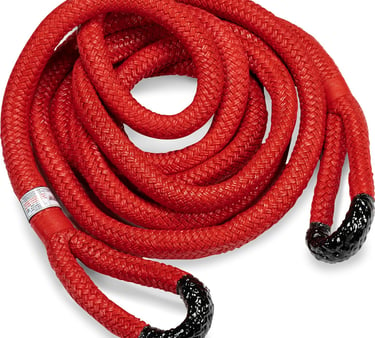"Heavy-Duty towing-with-a-rope| Max Load Capacity & Safety Tips for Vehicle Recovery"
"Professional-grade towing-with-a-rope for safe vehicle recovery, cargo towing, and heavy-duty applications. Durable synthetic fibers, high tensile strength, and OSHA-certified. Shop now for bulk orders & custom


Towing a Car with a Rope
When it comes to towing a car with a rope, it's important to follow the proper procedures to ensure safety for both the towing vehicle and the car being towed. Here are the steps to tow a car with a rope:
Check the owner's manual: Before towing a car with a rope, it's crucial to check the owner's manual of both vehicles to ensure that towing with a rope is allowed and to understand any specific instructions or limitations provided by the manufacturer.
Use a suitable rope: Select a tow rope that is strong enough to handle the weight of the car being towed. It's recommended to use a tow rope specifically designed for towing purposes, as it will have the necessary strength and durability.
Attach the tow rope: Securely attach the tow rope to the towing points on both vehicles. The towing points are typically located at the front or rear of the vehicle and are designed to withstand the forces of towing. Avoid attaching the tow rope to any other parts of the vehicle, such as the bumper or axle, as this can cause damage.
Communicate with the driver: Clear communication between the driver of the towing vehicle and the individual in the car being towed is essential. Use hand signals or two-way radios to ensure that both parties are aware of when to start, stop, and make any necessary turns.
Drive cautiously: The driver of the towing vehicle should start slowly and accelerate gently to avoid placing sudden stress on the tow rope. It's important to maintain a safe distance and speed, especially when braking or making turns.
Seek professional assistance if unsure: If you are not confident in your ability to tow a car with a rope, it's best to seek the assistance of a professional towing service to avoid any potential risks or damage.
Towing a Skier with a Tow Rope
When it comes to pulling a skier with a tow rope, safety and proper technique are paramount. Here's how to go about it:
Use a suitable tow rope: Select a tow rope specifically designed for pulling skiers. These ropes are typically made of durable materials that can withstand the forces exerted during skiing.
Attach the tow rope: The tow rope should be securely attached to the back of the boat or watercraft. Ensure that the attachment point is strong and capable of withstanding the tension created by pulling a skier.
Signal the skier: Before starting the boat, communicate with the skier to ensure they are ready and prepared to be pulled. Establish a clear set of hand signals or verbal cues to indicate when the skier is ready to be pulled and when they want to stop.
Gradual acceleration: The driver of the boat should gradually increase the speed to pull the skier, avoiding sudden jerks or movements that could cause the skier to lose balance or control.
Maintain a safe distance: It's important for the driver of the boat to maintain a safe distance from any obstacles or other watercraft while towing the skier. This helps to prevent accidents and ensures a smooth skiing experience.
Monitor the skier: The driver should keep a close eye on the skier at all times, being ready to slow down or stop if the skier signals for assistance or falls into the water.
Attaching a Tow Rope to a Pontoon Boat
When attaching a tow rope to a pontoon boat, it's essential to do so in a manner that ensures safety and stability. Here's how to properly attach a tow rope to a pontoon boat:
Locate a strong attachment point: Identify a sturdy and secure attachment point on the pontoon boat, such as a tow bar or a designated towing eye. This attachment point should be capable of withstanding the forces exerted during towing activities.
Use a bridle: Consider using a tow rope bridle, which distributes the pulling force evenly across the front of the pontoon boat. This helps to prevent strain on a single attachment point and enhances stability during towing.
Secure attachment: Once the tow rope is connected to the pontoon boat, ensure that it is securely fastened to prevent any slippage or detachment during towing. Double-check the connection to provide peace of mind before initiating the towing process.
Communicate with the rider: If towing a person or an object, establish clear communication with the individual being towed to coordinate the start, speed, and any necessary stops during the towing activity.
Gradual acceleration: The driver of the pontoon boat should gradually increase speed to pull the towed object or individual, allowing for a smooth and controlled towing experience.
Monitor the towing process: Throughout the towing activity, the driver should remain attentive and be prepared to make adjustments as needed to ensure the safety and comfort of the individual or object being towed.



